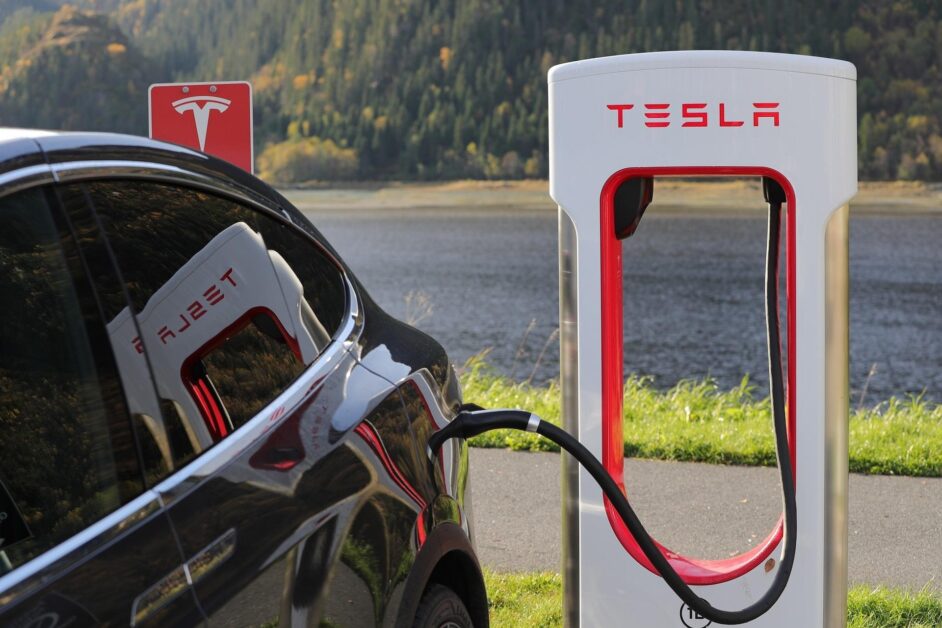The electric vehicle (EV) industry is no stranger to turbulence, but recent developments have thrust Tesla into the spotlight for reasons beyond its cutting-edge technology. Tesla stops taking new orders in China for its US-manufactured Model S and Model X vehicles, a move driven by escalating trade tensions between the United States and China. This decision, reported by outlets like South China Morning Post, Reuters, and Nikkei Asia, reflects the complex interplay of geopolitics, economics, and fierce competition in the world’s largest EV market. Here’s a deep dive into why Tesla stops taking new orders in China, what it means for the company, and how it’s navigating this challenging landscape.

The Trade War’s Impact on Tesla’s Strategy
The decision to halt orders for Model S and Model X stems directly from the intensifying trade war between the US and China. In a tit-for-tat escalation, China raised tariffs on US imports to 125% on April 11, 2025, in response to President Donald Trump’s imposition of 145% duties on Chinese goods. These punitive tariffs have dramatically increased the cost of US-made vehicles in China, pushing the price of a Model S sedan above 1.26 million yuan (approximately $172,260) and the Model X SUV to 1.33 million yuan. For context, these prices make Tesla’s imported models significantly less competitive in a market already gripped by a brutal price war among hundreds of EV manufacturers.
Tesla stops taking new orders in China for these models because the elevated tariffs render them unviable against locally produced alternatives. The South China Morning Post reported that Tesla’s sales managers are now steering customers toward the Shanghai-made Model 3 and Model Y, which are insulated from these import duties. This pivot underscores Tesla’s strategic reliance on its Shanghai Gigafactory, which produces the bulk of its vehicles sold in China and exported to markets like Europe. Unlike the Model S and Model X, the Model 3 and Model Y benefit from localized production, with 95% of their supply chain sourced within China, shielding them from the trade war’s fallout.
A Market Under Pressure: Competition and Declining Sales
China, the world’s largest car market and a global EV powerhouse, is a battleground for automakers. Tesla stops taking new orders in China not only due to tariffs but also because of fierce competition from domestic rivals like BYD, Xpeng, Xiaomi, and Zeekr. These companies offer competitively priced models with specifications that often match or surpass Tesla’s offerings. For instance, BYD, the world’s largest EV maker by units sold, delivered over one million new energy vehicles (NEVs) in Q1 2025, dwarfing Tesla’s 172,754 units in China during the same period—a 22% year-on-year decline, according to the China Passenger Car Association (CPCA).
The competitive landscape is compounded by a domestic price war, where manufacturers are slashing prices to capture market share. Tesla’s US-made Model S and Model X, already subject to a 25% import duty before the recent tariff hikes, were niche products in China, accounting for less than 0.5% of Tesla’s 657,000 deliveries in 2024. With import duties now at 84%, these models are priced out of reach for most consumers, prompting Tesla to suspend new orders and focus on its more affordable, locally produced vehicles.
Tesla Stops Taking New Orders in China: A Closer Look
The operational shift is evident across Tesla’s digital platforms in China. Reuters reported that the “Order New Car” option for Model S and Model X was removed from Tesla’s Chinese website and its WeChat mini-program, a critical sales channel in the country. Customers attempting to place orders were redirected to view existing inventory, such as a white Model S priced at 759,900 yuan (approximately $103,800). This change signals that Tesla stops taking new orders in China for these models to clear out remaining stock while avoiding further financial strain from importing high-cost vehicles.
The decision aligns with Tesla’s broader challenges in China. Production at the Shanghai Gigafactory has declined for six consecutive months, and first-quarter deliveries fell to their lowest level in three years. While Tesla sold 74,127 vehicles in China in March 2025, up 18.8% year-on-year, exports from the Shanghai plant plummeted 82.4% to just 4,701 vehicles, reflecting the global impact of trade barriers. Tesla stops taking new orders in China for imported models to streamline operations and focus on its Shanghai-produced vehicles, which dominate its sales in the region.
The Role of Elon Musk and Political Backlash
Tesla’s challenges in China are not solely economic. CEO Elon Musk’s political engagements, particularly his close alignment with the Trump administration, have stirred controversy. Musk’s role in leading the Department of Government Efficiency (DOGE) and his vocal support for Trump’s policies have drawn scrutiny, with some analysts suggesting that his political stance is tarnishing Tesla’s brand. Posts on X have speculated that Tesla stops taking new orders in China partly due to this backlash, though these claims remain inconclusive. For instance, a user on X noted, “Musk let China take IP to get the cheap labour… Tesla just ‘paused orders’ in China,” hinting at broader strategic missteps.
Musk’s contradictory stance on tariffs adds another layer of complexity. While Tesla warned the US government in 2024 that tariffs could harm American companies, Musk recently advocated for “zero tariffs” between the US and EU, a position at odds with Trump’s 10% global tariff imposition. This inconsistency may confuse investors and consumers, particularly in China, where Tesla stops taking new orders in China amid heightened trade tensions.
Tesla’s Shanghai Gigafactory: A Strategic Asset
Tesla’s Shanghai Gigafactory, operational since 2018, is a cornerstone of its China strategy. As the first wholly foreign-owned car factory in mainland China, it has enabled Tesla to bypass the joint-venture requirements that constrained other automakers. The plant produces Model 3 and Model Y vehicles, which constitute the vast majority of Tesla’s sales in China and exports to Asia and Europe. By focusing on these models, Tesla mitigates the impact of tariffs and leverages its localized supply chain to remain competitive.
However, the factory is not immune to challenges. Nikkei Asia reported in 2023 that 40% of Tesla’s battery material suppliers were Chinese, a dependency that could complicate operations as trade tensions escalate. Tesla has since sought to diversify its supply chain, but the rapid tariff hikes have accelerated the need for self-sufficiency. Tesla stops taking new orders in China for US-made vehicles to double down on its Shanghai operations, ensuring that its core products remain accessible to Chinese consumers.
The Broader Context: A Global Trade War
The US-China trade war, reignited by Trump’s aggressive tariff policies, has far-reaching implications for the EV industry. China’s retaliatory tariffs, which jumped from 84% to 125% in a matter of days, have disrupted global supply chains and consumer markets. While Tesla stops taking new orders in China for imported models, other automakers face similar pressures. For example, Chinese EV giant BYD, which relies on its home market for 90% of sales, beat Tesla in global EV deliveries for the second consecutive quarter in Q1 2025, highlighting the shifting dynamics of the industry.
The trade war’s impact extends beyond China. Southeast Asian economies, key export markets for Chinese automakers, are bracing for reduced consumer demand due to tariff-induced economic slowdowns. Cui Dongshu, secretary general of the CPCA, noted that “the abrupt hike in U.S. tariffs will have a disastrous impact on economies such as Southeast Asia,” indirectly affecting Tesla’s export strategy from Shanghai.
What’s Next for Tesla in China?
As Tesla stops taking new orders in China for Model S and Model X, the company faces a pivotal moment. The focus on Shanghai-produced Model 3 and Model Y vehicles is a pragmatic response to tariffs and competition, but it comes with risks. Tesla’s ageing model lineup, lack of significant updates, and Musk’s polarizing political involvement could further erode its market share. Chinese rivals like Xpeng, which reported a 268% year-on-year delivery surge in March 2025, and Xiaomi, with a record 29,000 units delivered, are capitalizing on Tesla’s vulnerabilities.
To regain momentum, Tesla may need to innovate its product offerings and localize more of its premium models. The Shanghai Gigafactory’s success in producing Megapacks for energy storage suggests the potential for diversification, but the core automotive business requires fresh investment. Additionally, Tesla stops taking new orders in China to streamline costs, but the financial blow from lost sales in Europe and declining demand globally could strain its resources.
Consumer Sentiment and Market Dynamics
Chinese consumers, accustomed to a dizzying array of EV options, are increasingly price-sensitive. The tariff-driven price hikes for Model S and Model X have made them luxury outliers in a market where affordability reigns. Tesla’s redirection of customers to Model 3 and Model Y aligns with this reality, as these models are priced more competitively and benefit from local production. However, consumer trust in Tesla may waver if the brand is perceived as retreating from its premium segment or if Musk’s political controversies continue to dominate headlines.
On X, sentiment reflects a mix of scepticism and concern. One user remarked, “Tesla is done in China. They were making 950,000 vehicles a year there, and Elon has stopped taking orders,” though this exaggerates the scope of Tesla’s decision. Such posts underscore the need for Tesla to communicate its strategy clearly to avoid misperceptions.
Conclusion: Tesla’s Path Forward
Tesla stops taking new orders in China for its US-made Model S and Model X vehicles as a direct response to the US-China trade war and unrelenting competition in the EV market. By pivoting to its Shanghai-produced Model 3 and Model Y, Tesla aims to maintain its foothold in China while navigating prohibitive tariffs and a crowded market. The Shanghai Gigafactory remains a critical asset, but Tesla must address declining sales, innovate its product lineup, and manage the fallout from Musk’s political engagements to stay competitive.
The broader trade war, with its ripple effects across global markets, adds uncertainty to Tesla’s future. As Chinese rivals like BYD and Xpeng gain ground, Tesla’s ability to adapt will determine its long-term success in China. For now, Tesla stops taking new orders in China to weather the storm, but the road ahead demands resilience and strategic foresight.
